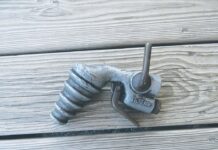Last week, the Bureau of Land Management announced it was exploring options to decrease the number of wild horses and burros in the nation’s free-roaming herds. Those herd sizes can double about every four years, so it’s obvious that management is essential.
As of June 2008, the agency has more than 30,000 wild horses in short- and long-term holding facilities — but just like other horse owners, the cost of keeping those animals is sky-rocketing. This fiscal year alone, holding costs are more than $26 million, more than three-fourths of the $37 million appropriation for the management program. Something’s got to give.
The BLM is looking at selling older or other unadopted animals “without limitation” to any willing buyer, and to euthanize wild horses when no willing adoption exists.
Earlier in June, the American Horse Council and USDA sponsored a day-long forum on the “unwanted horse” issue. It wasn’t a debate on horse slaughter in the United States, it was a “coming together” of all sides to identify causes, numbers, options, solutions. After reading the proceedings, I’m not sure any solutions were identified, but the event earned my respect with its breadth and diversity of opinions and presentations.
During the forum, Tom Lenz, with the Unwanted Horse Coalition, offered this definition of unwanted horses: “Horses which are no longer wanted by their current owner because they are old, injured, sick, unmanageable, or fail to meet their owner’s expectations.”
Some will argue that being old shouldn’t make a horse unwanted, but in the real world, that’s a solid, working definition. Whenever a horse is sold, the seller didn’t want the horse any longer.
Lenz explained the Unwanted Horse Coalition was formed to educate the equine industry and public how to “own responsibly.”
“We need to focus our efforts on the front end of the problem rather than the rear end of the problem,” he said.
Good point. Everyone thinks having a horse would be a great idea. Not everyone realizes a) the work involved; b) the time involved; c) the money involved. Here’s the financial bottom line: The cost of basic horse care ranges between $1,800 and $2,400 per year. As our country’s economic difficulties worsen, I expect many more families will need to make a tough decision to sell a horse that is no longer “wanted” because they simply can’t afford to own it. It is wanted emotionally, but not financially.
No one really knows how many of the 9.2 million horses in the United States are “unwanted.” There are no solid figures on the number of rescue facilities, no solid figures of the number of horses at such facilities, no solid figures on how many horses are abandoned. The only figure we know — and one that’s only peripherally related — is that between 90,000 and 100,000 horses per year were slaughtered at U.S. facilities up until 2007, or roughly 1 percent of the U.S. horse population. That option no longer exists.
Within the horse industry, there are many efforts by breed associations, rescue farms, humane societies, riding groups and other equine allies to beef up horse ownership education, before one is even purchased. There are also new programs offering creative end-of-life options.
If the Unwanted Horse forum is any indication, there is real movement away from pointing fingers of blame and toward the “front end of the problem.”
“If you or anyone in your family has ever cared for, ridden, shown, leased, or owned a horse that was then sold, then you are part of the unwanted horse cycle,” challenged forum presenter Karin Bump, professor of equine studies at New York’s Cazenovia College.
“Rather than the state of fractionalization, let’s move forward with the energy of collaboration,” she added.
And own responsibly.












